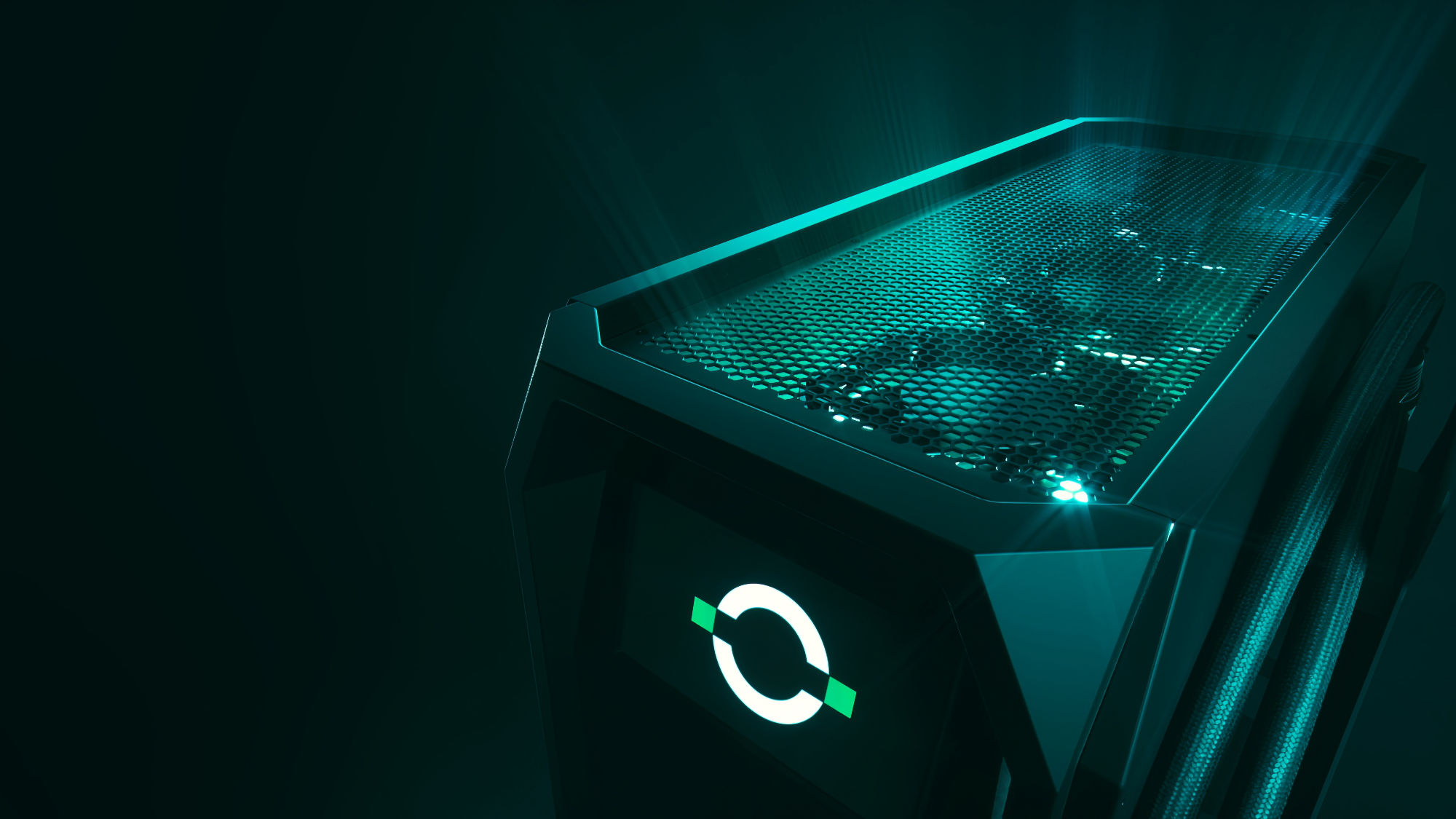THEO is more than just a brand– it’s a revolution in laser technology. The launch of THEO in 2023 had a clear focus on innovation with precision tools driven by design and built for the real-world and modern welding professionals. Since the beginning there’s been a good degree of obsession with productivity, THEO is built for those who say no to slow.
Behind THEO lasers is Maxphotonics, a global leader in laser solutions since 2004. With over 200.000 units produced annually, Maxphotonics brings decades of engineering excellence to every THEO product.
Steffen Köhnlein, EMEA Head of Sales at THEO Laser, answered some of our questions.
Fine Engineering: What innovative products, services, or solutions has your company launched this year—or plans to launch by early next year?
Steffen Köhnlein: So far, 2025 has been a year of many developments and new additions, but I have to say that the highlights are undoubtably the MA1 ULTRA, the Double Wire Feeder and the upcoming TM Series.
The MA1 ULTRA, is the latest handheld laser welder in THEO MA1 Series. It was engineered with Maxphotonics’ world-class laser technology for professionals who demand deeper welds, reduced heat, and enhanced power, while maintaining precise laser control and stable beam quality.
This machine maintains a 100% duty cycle on materials up to 8mm, ensuring continuous, reliable performance in the most demanding conditions. The MA1 ULTRA can weld on different materials. Here are some examples with the relative depth. Stainless steel: 8,5mm; Carbon steel / Iron: 8,5mm; Galvanized Sheet: 8,5mm; Aluminium: 6,5mm.
The MA1 ULTRA comes with a T1X wire feeder, which has been optimized for smoother operation and communicates directly with the unit, ensuring seamless performance and precise control.
We build every machine of the MA1 series with industrial-grade, gold-plated laser pump modules. However, the difference in the MA1 ULTRA is that such gold-plated pump modules have more high-end diodes built in, which deliver further efficiency, longer life, and consume 10% less energy.
Same as for the rest of the MA1 Series, the MA1 ULTRA emphasizes safety in all welding tasks with features like a laser status indicator, dual-trigger mechanism, emergency stop button, and a robust interlock system. Additional measures include a key switch and double-channel safety controls for comprehensive protection; all while maintaining high performance.
We are very excited about bringing the Double Wire Feeder to customers. When a welding operator can introduce twice the amount of filler material (Double Wire Feeding), the overall melt pool volume increases considerably. This translates to a larger leg length (A-dimension) and to an improved gap-bridging capability of the laser welding process. However, there are a couple of precautions to follow. First, the welder must pay attention to how both wires melt and how the laser beam penetrates the base material. Second, to keep a stable process and homogeneous fusion zone, the welder must exercise precise control. When the operator observes these measures, common weld defects such as porosity, lack of fusion, or edge undercut are prevented, and the result is a high-quality weld seam with excellent mechanical properties and visual appearance.
Furthermore, the advanced technologies built into THEO MA1 Series machines allow operators to handle the double wire feeding with ease, without additional manual skills. Another key feature is the Wobble Stop function, which keeps the laser beam focused precisely on the center of the weld seam, even during beam oscillation. Such feature enables deeper, more consistent fusion in the center of the joint and helps eliminate edge notches, which is a common issue in conventional laser welding.
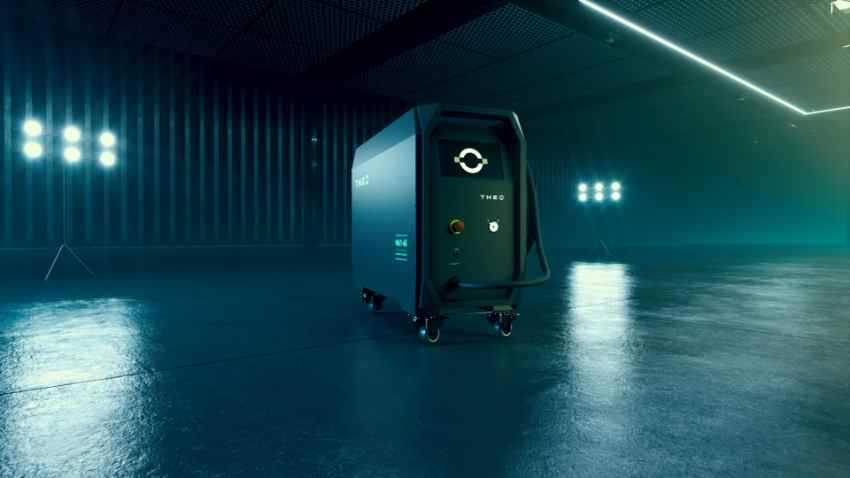
Now (September 2025) we’re about to unveil the TM Series and we’re thrilled because we’re adding a new product to our offering that aims to provide an innovative solution to industrial cleaning. It’s still built with the same Maxphotonics laser excellency.
THEO TM Series consists of handheld pulsed laser cleaners that can remove, for example, rust, paint, and contaminants, and in seconds the operator will have surfaces restored to their original state. Other industrial applications are for example: surface preparation for coating; corrosion removal; pre-weld cleaning and preparation; post-weld treatment; surface conditioning; equipment degreasing; contaminant removal from hulls and propellers; marking and identification removal on marine components; anodization removal; oxide removal from metal surfaces.
An additional impressive feature is that there’s no more need for abrasives or solvents. To operate it, all that’s necessary is appropriate PPE – it’s still a laser machine – and a fume extractor that draws away airborne particles.
As a pulsed laser cleaner, it comes with an ultra-focused output that – with scan speeds up to 30 m/s – helps the technician control every pass with extreme accuracy. Such a level of precision is achieved also in the tightest and toughest angles without disassembly. This translates to less downtime and more efficiency.
As for every other THEO solution, we developed it with the operator’s safety in mind. The highlights are:
- Smart Shut Down. Laser fires only when aimed at the workpiece.
- Dual-Channel Interlocks. It doesn’t operate unless all safety conditions are met.
- Fiber Breakage Detection. Constant monitoring with instant alerts and pinpoint diagnostics.
Last but not least, being user-friendly was another key point in our development process. That’s why every 10.4″ touchscreen comes loaded with intuitive presets to help the cleaning operator start the job quickly. On top of this, the cleaning torch offers further usability features. First, the built-in distance meter, controlled by the PLC (Programmable Logic Controller), locks the focal point instantly and you can see a feedback on the UI. Second, the operator can adjust settings from the handle without walking back to the machine.
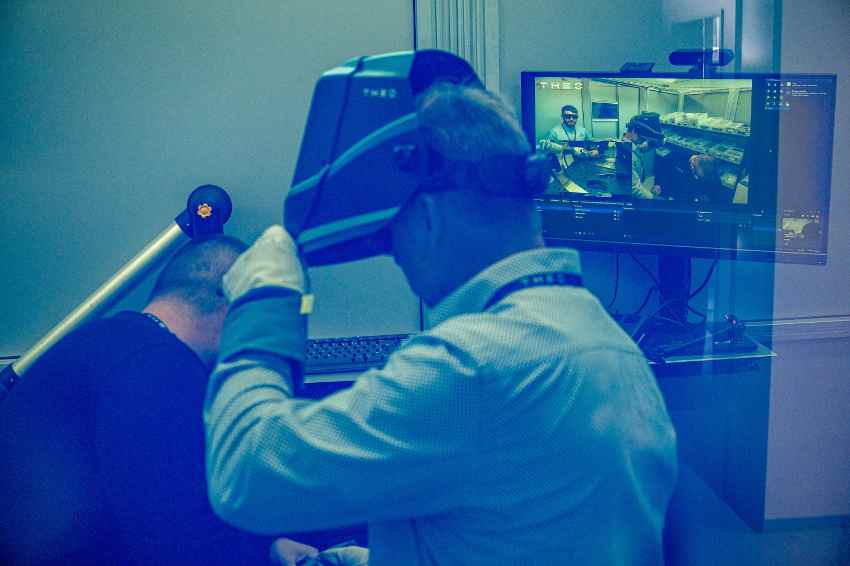
F. E: What market needs or customer challenges are these innovations aiming to address?
S.K: The MA1 ULTRA meets the following customer needs: extra weld depth; precision; efficiency. And, of course, the welder’s safety.
The needs that customers and Partners expressed and led to the development of the Double Wire Feeder are about improved productivity and enhanced weld quality. With the Double Wire Feeder, the welder can experience reduced post-processing from the get going, which helps streamline the efficiency of the welding process. From a quality point of view, this wire feeder has a stronger gap-bridging capability, as well as a deeper and more consistent fusion. Overall, it provides you with a more consistent and stable process. Lastly, it has the same intuitive usability as our single wire feeder.
Regarding the TM Series, the needs that we identified focus on improving cleaning quality and being more energy efficient. Customers want to be able to remove material with precision, without thermal damage. Another important point is substrate protection, which isn’t always guaranteed with mechanical or chemical cleaning methods. When these needs are met, customers can experience greater process control.
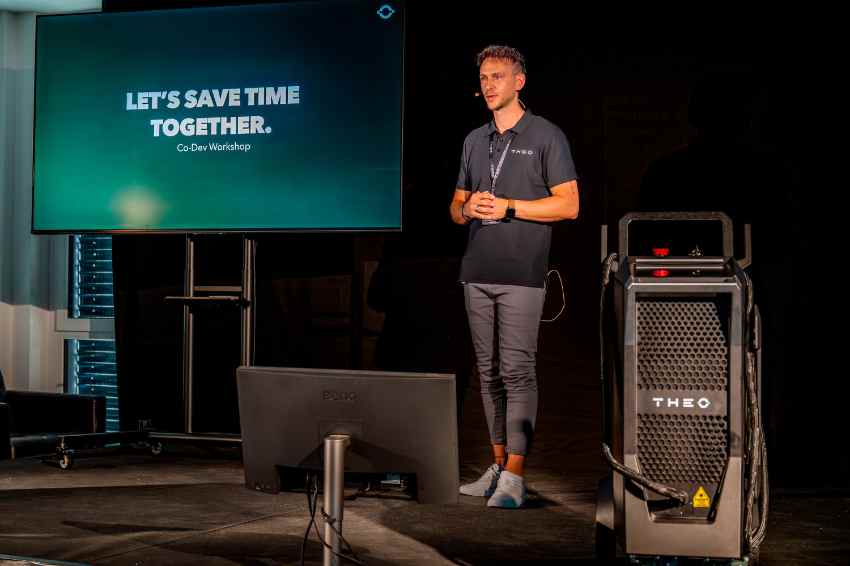
F.E: Which technologies or methods have played a key role in delivering these innovations (e.g., AI, automation, digital platforms, new materials)?
S.K: Automation has a massive impact on our ability to deliver high product quality. Our factory is organized to be a vertical manufacturing production, and every production floor is fully automated.
Within this manufacturing automation set up, AI plays a role in the product development and production phase, as we use AI to get faster simulations of our designs.
In terms of platforms, on our website we offer THEO Academy for free (check it out here: https://academy.theo.inc/). It’s a space where THEO experts teach registered members about laser safety and laser processes.
F.E: Have you introduced any innovation that contributes directly to sustainability, efficiency, or reduced environmental impact?
S.K: Handheld laser welding can contribute to a more positive environmental impact. The primary reasons boil down to energy usage, waste reduction, and material efficiency.
Compared to traditional welding methods such as MIG or TIG, laser welding is a far more efficient method. It uses a concentrated beam of light to create a precise weld, which requires significantly less electrical power to operate. And Maxphotonics’ state-of-the-art laser technology that is built in THEO handheld laser welding machines increases electro-optical efficiency up to 37%.
Regarding waste reduction, again in contrast to the traditional welding methods, laser welding doesn’t often require the same amount of consumable materials (ex: filler wire or gas) thanks to the precision of the laser beam. Less filler wire means fewer resources are extracted, processed, transported and thrown away.
It’s also worth mentioning that in terms of quality and material efficiency, the high precision of the laser and the built-in Wobble Stop function allow us to create strong, clean welds with minimal heat input. This reduces the heat-affected zone on the parts being joined, which often makes it possible to weld thinner materials without distortion. In addition, such ability to work with thinner, lighter materials helps reduce the overall weight of finished products. This strength is especially relevant for industries such as automotive and aerospace, for example, where companies keep developing lighter vehicles to better fuel efficiency and lower emissions, among other things.
Lastly, Handheld laser welders create a cleaner workspace by significantly reducing the amount of spatter produced. Unlike traditional welding, which can throw off sparks and vaporize metal particles into the air, laser welding’s focused energy minimizes these harmful airborne particles. This also means you don’t typically need chemical fluxes to clean the surface or harsh shielding gases beyond a simple inert gas like argon or nitrogen (N2) to protect the weld, which in turn cuts down on chemical use and makes the process safer for the operator and the environment.
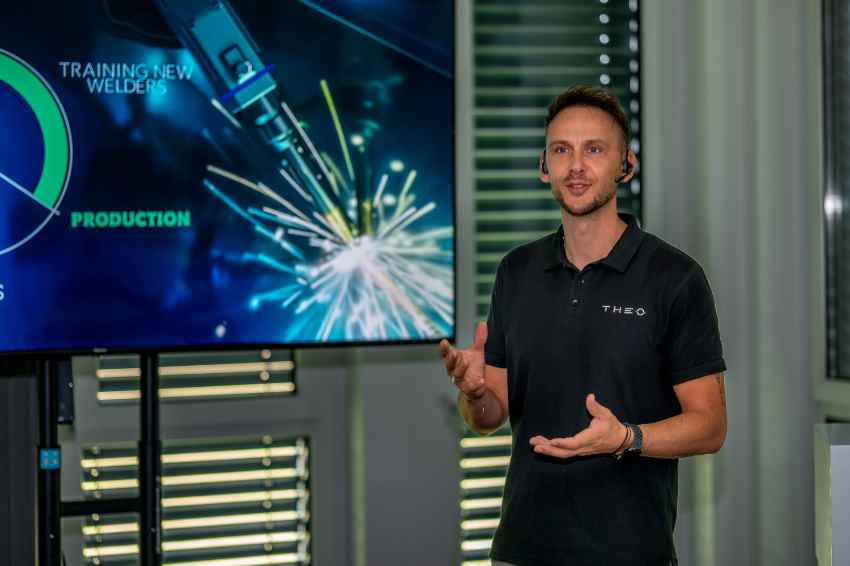
F.E: Are there specific industries, regions, or customer segments you are targeting with these innovations?
S.K: We consider ourselves a global company. Through our distribution network, we’re active in North, Central and Latin America, Europe, Middle East and Africa, and APAC region.
With the MA1 ULTRA and the TM Series, we intend to reach 2 different customer segments with their distinct needs.
On the MA1 ULTRA with the double wire feeder integrated, our ideal customers are businesses that look for a welding tool that can weld thick materials (8,5 – 10mm) and may need to join wider welds (4mm). At the same time, these are organizations that seek speed, as well as waste reduction. Industries may vary, but they usually include those where MIG and MAG jobs are required such as: Automotive, Manufacturing and Fabrication, Construction, Shipbuilding and Rail, and Pipeline Fabrication.
Whereas the TM Series is meant for small to large scale operations that in their cleaning procedures require speed, intuitive usability, reliability, and, of course, safety. Customers looking for such a solution usually belong to industries that deal with materials like stainless steel, mild and carbon steel, aluminium, and a wide range of other metals and alloys. These include: automative, aerospace, shipbuilding / offshore, electronics & semiconductor industry, industrial manufacturing and fabrication, cultural heritage & art restoration, mechanical & tooling industry.
F.E: What was the feedback received from clients that has influenced the development of your recent or upcoming solutions?
S.K: We developed the MA1 ULTRA thanks to our customers. They shared that the previous THEO handheld laser welding models made welding so much smoother and easier that they could replace most of their TIG welding units, as well as hire new laser welding operators.
However, we were also told in no half terms that they didn’t just want to speed up typically TIG-related jobs, they also wanted machines that could replace parts of MIG and MAG jobs. As a result, we decided to develop a new unit that could pack increased laser power to achieve thickness up to 10mm, but that could also consistently achieve the A-measure, which is the visual strength inspection our customers use.
Giving the customers the possibility to replace the single wire feeder with a double wire feeder was just an organic product development, as the single wire feeder often isn’t enough to bridge wider welds. Thanks to such integration, in a short time some of our customers were able to show us some WPQRs (Welding Procedure Qualification Record, a worldwide recognized certification) with Execution Class 2 and 3.

Handheld pulsed laser cleaners, on the other hand, are still a relatively new laser application. When we first decided to develop our own model, the decision didn’t come specifically from customer feedback, rather from both our experience in the sheet metal industry and our direct observation of how companies operate using highly chemical products to carry out mechanical cleaning and polishing, as well as grinding procedures. These methods produce fumes and micro particles that are released into the air where the cleaning operators work. In addition to such safety issues, the mechanical process of grinding can go 1 or 2 mm too deep. It may seem nothing, but it’s enough to impact on the quality of the finished product.
From the very beginning our goal was to offer a product that could speed the preparation and cleanup process, while delivering the highest quality standards possible consistently. For us at THEO, the operator’s safety while operating one of our units is always a priority. That’s why developing a machine that could minimize human lapses came as extremely natural.
THEO Day 2025 was an event we organized exclusively for the European Partners in our distribution network. We invited them to THEO’s new European Head Quarter in Gilching, close to Munich (Germany). Among other things, we gave them an exclusive preview of the TM series. They were very happy to contribute their opinion to the development, and they were eager to learn more about the TM series. We got rather comprehensive feedback that touched on several aspects from product design, to ergonomics, usability and safety.
F.E: How do the products/solutions help improve client efficiency or productivity?
S.K: As mentioned earlier, laser technology itself makes increased efficiency and productivity possible. First and foremost, the pre- and post-working times get cut up to 85% in comparison to traditional welding methods.
F.E: What products/solutions do you believe will be industry highlights in 2025?
S.K: Since we’re already in the second half of 2025, I’ll share what I think is going to be the industry trend highlight for 2026: AI-driven automation for industry solutions, especially robotized laser welding programmed by AI.
Now, check out THEO’s website: https://theo.inc
Linkedin: https://www.linkedin.com/company/theoinc/?viewAsMember=true
Youtube: https://www.youtube.com/@Theoinc
Instagram: https://www.instagram.com/theo.laser/
Facebook: https://www.facebook.com/theolasersinc

